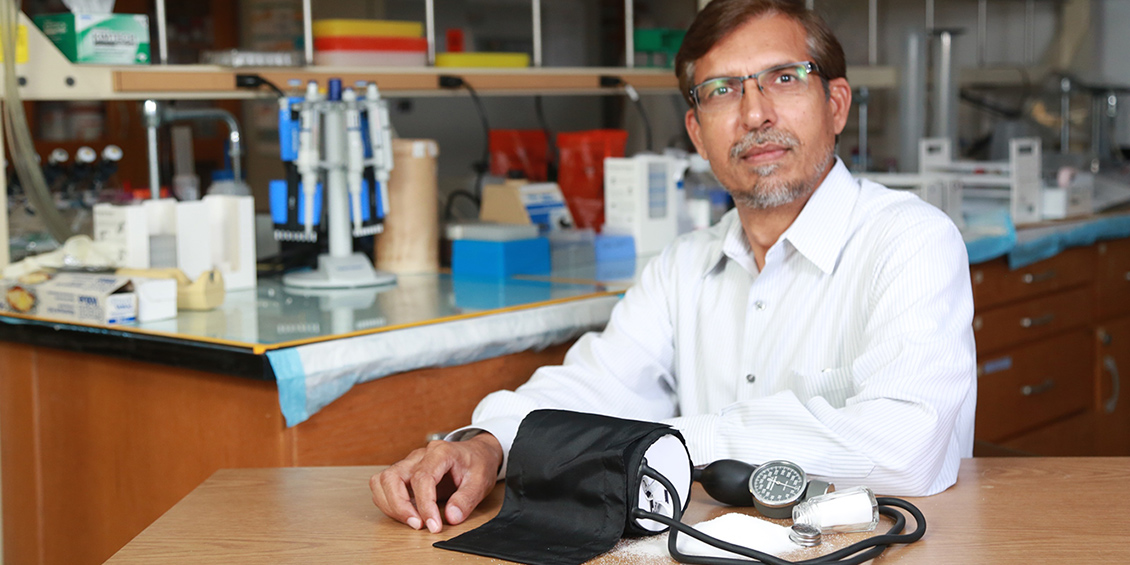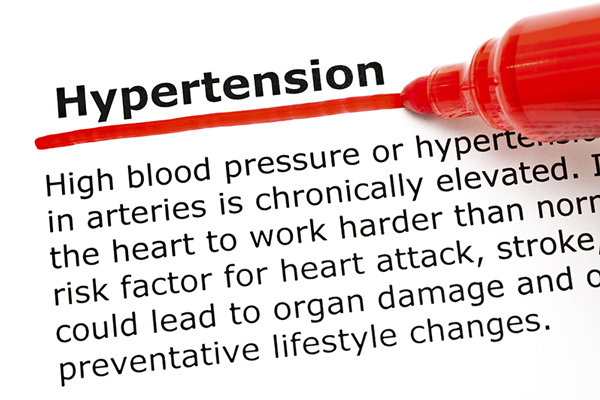Research News

Worth its Weight in Salt?
Hussain Nets $1.7M NIH Award to Study Hormone Receptors in Obesity-associated Hypertension
UH College of Pharmacy Professor Tahir Hussain, Ph.D., has received a new five-year, $1.7 million National Institutes of Health grant to explore the relationship between two hormones involved in blood pressure regulation and sodium excretion as a potential target for new therapeutics for obesity-associated hypertension.
In the obese patient, blood flow through the kidney is reduced and overall function impaired due to structural and biochemical changes that occur with excessive weight gain (and further exacerbated by the high-sodium diet common among obese patients). This results in increased sodium reabsorption and water in the blood, which in turn increases blood pressure and stress throughout the cardiovascular system.
As kidney function continues to be overworked, filtration capacity and blood flow in the kidneys is restricted until the kidneys eventually fail. In the presence of high-sodium intake, homeostasis is further disrupted as fluid is retained (continuing to elevate blood pressure) as the body tries to compensate.
Due to a complex series of biochemical and physiological changes that occur in obesity (especially in association with a high-sodium diet), hypertension is approximately two times as prevalent in obese patients. Hypertension is part of an interrelated family of comorbidities, including cardiovascular disease and heart failure, diabetes and kidney failure, that commonly develop when left untreated (and often, in spite of treatment).
Hussain’s work is focused on the functional relationship between two receptors of the hormone angiotensin II (Ang II), which plays a major role in regulating blood pressure through vasoconstriction/vasodilation and extracellular fluid through water and sodium retention/secretion.
 Ang II has two primary receptors: the highly expressed AT1 subtype is associated with the deleterious effects of vasoconstriction and sodium retention, while the lower-expressing AT2 subtype has an oppositional function to AT1 and only recently has become a target of interest for researchers.
Ang II has two primary receptors: the highly expressed AT1 subtype is associated with the deleterious effects of vasoconstriction and sodium retention, while the lower-expressing AT2 subtype has an oppositional function to AT1 and only recently has become a target of interest for researchers.
With the long-held view that AT1 was the prime suspect in hypertension, two of the most prescribed anti-hypertension drugs on the market today are angiotensin converting enzyme (ACE) inhibitors, which inhibit production of Ang II by blocking an essential enzyme, and angiotensin II receptor blockers (ARBs), which block the activity of the AT1 receptor (but not AT2) and consequently reduce the levels of Ang II.
"What we have learned in the past 10 years of research is that some components, including AT2, have beneficial effects in increasing sodium excretion and lowering blood pressure," Hussain said. "Because AT2 expression is low, simply leaving it alone — in the case of ARBs — isn’t sufficient to realize AT2’s full benefits, which also includes anti-oxidant and anti-inflammation effects that further protect the kidney from injury.
"The goal of our research is to determine how to activate AT2 expression pharmacologically with an agonist. As hypertension is commonly treated with more than one drug, we’re specifically looking to see if we can use ARBs to inhibit the deleterious component — AT1 — along with an activator to stimulate the beneficial component of AT2."